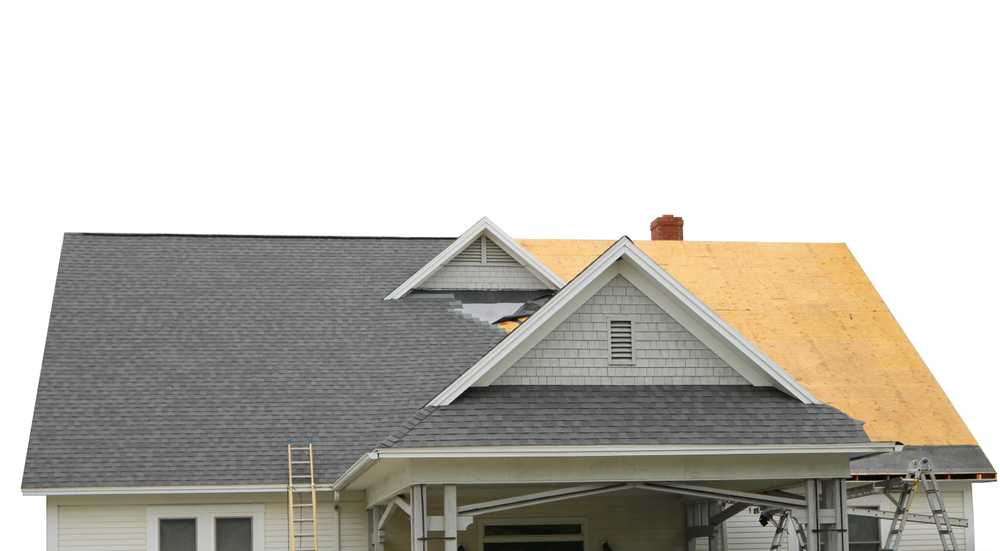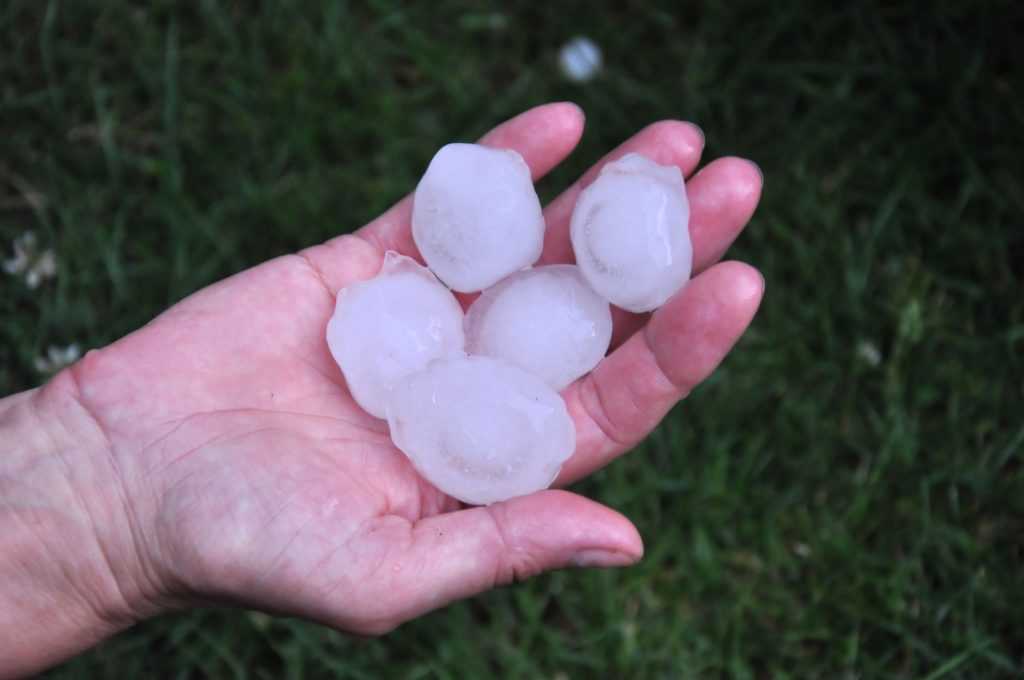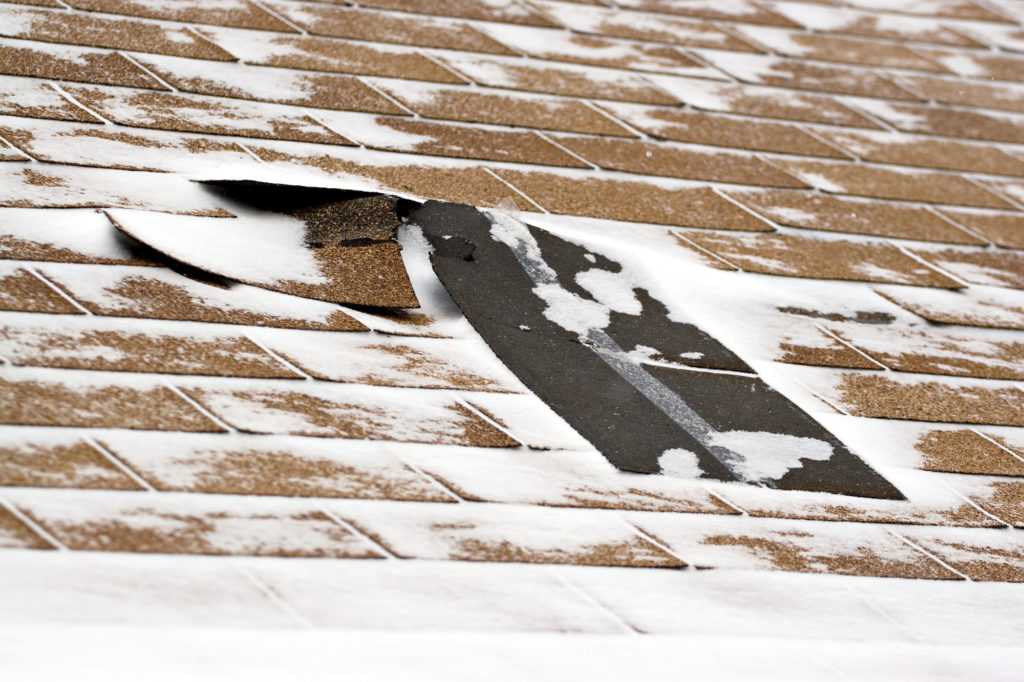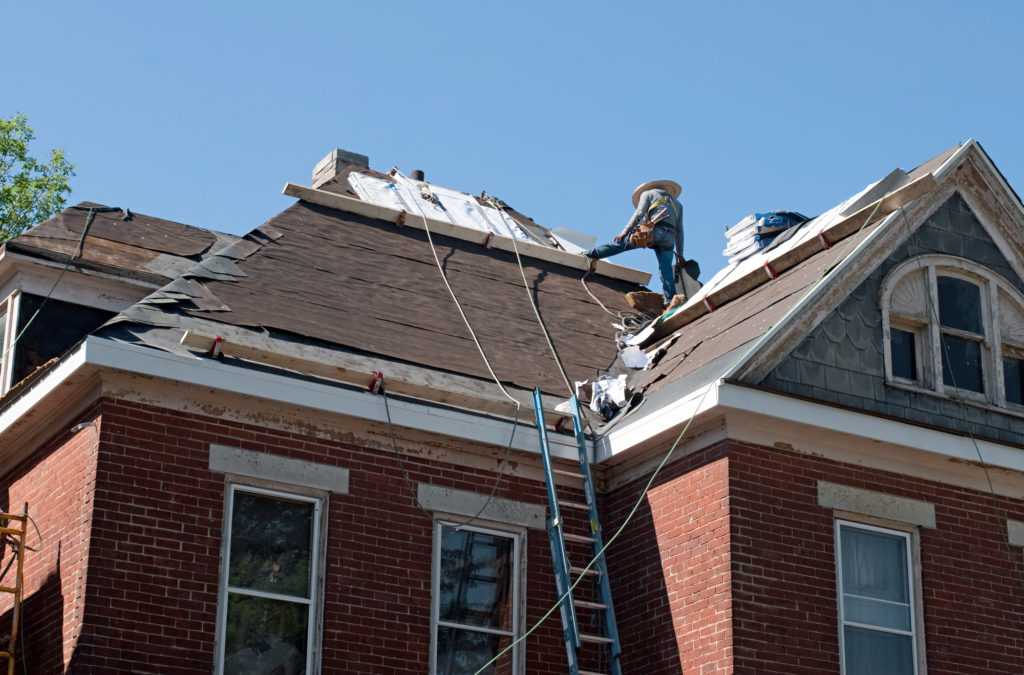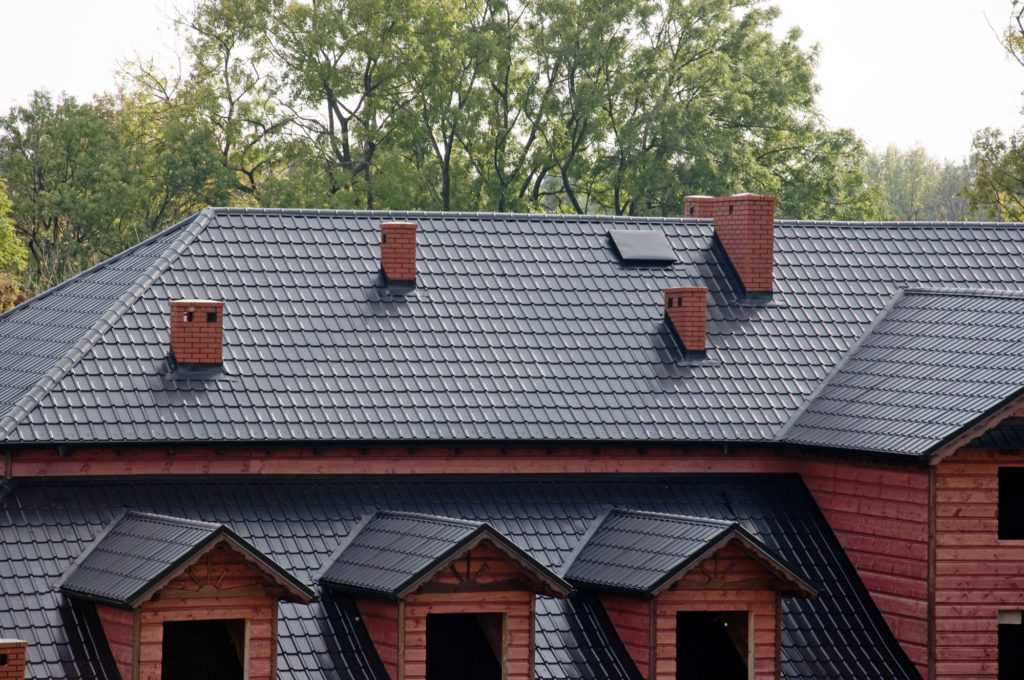In roofing, a “square” is 100 square feet of roofing material. On average, a new roof costs between $260 and $700 per square, depending on the material used.
Naturally, homeowners tend to ask how to get homeowners insurance to pay for a new roof. It’s a good question–it often will. Of course, certain conditions apply which are outlined in your policy.
How to Get Homeowners Insurance to Pay for a New Roof
Background: Generally, there are four main sections of a homeowners insurance policy: dwelling, other structures, personal property, and liability. Dwelling insurance covers the actual structure of the home, including the roof. Other structures refers to sheds and other built structures that are on the property but that aren’t connected to the house. Personal property insurance is like renter’s insurance; it covers the belongings that live in the house with you in the cases of damage or theft. Finally, liability insurance covers the homeowner if someone who doesn’t live in the house gets injured in it.
Foreground: So to find how to get homeowners insurance to pay for a new roof, your first stop will be your copy of your policy, and specifically the section on dwelling insurance. The big question your insurance will ask is, “Do you need a new roof for a covered reason?”
What’s Covered
The short answer to what’s covered is sudden, accidental damage. Usually, this includes fires, lightning strikes, windstorms, and hail. So an important part of how to get homeowners insurance to pay for a new roof is being able to show that one or more of these things damaged your roof to the point that it needs replacing. If you can do that, paperwork and the deductible should be all that stands between you and that new roof.
Although insurance companies usually have certain maintenance requirements for policyholders to meet, even a roof in perfect repair can’t withstand being struck by lightning, for example. It’s just really tough to tell how pampered a given shingle was before it exploded. Likewise, a strong windstorm can send branches, furniture, Dorothy’s house, and other debris flying at such velocities that again, even a roof that’s in good repair can’t withstand their impact.
The same is often true of severe hail. Some storms produce hailstones bigger than baseballs and–one more time–how could a reasonable person expect a roof to come out undamaged after being hit by hundreds of icy fastballs?
Does Homeowners Insurance Cover Roof Leaks?
Yes. If they’re caused by the right kind(s) of sudden, accidental damage, like we talked about above.
A roof leak is a fantastic reason to get on the horn with your favorite Denver roofing company so you can have them come out and determine the cause of your leak. The cause will be what determines whether your homeowners insurance covers your roof’s leak.
And hurry! The longer you wait after a storm, the closer “poor maintenance” gets to being your insurer’s way out of paying up.
What Isn’t Covered
Three reasons for roof replacement that are often not covered are floods, earthquakes, and regular wear-and-tear.
Unlike fire and lightning, floods and earthquakes damage many homes at once–sometimes many thousands of them–so if the insurance company had to pay for those repairs and replacements, they would go bankrupt. The alternative would be charging so much for premiums that the purpose of insurance would be defeated.
Sure enough, after Hurricane Katrina, we saw ardent resistance from practically the whole industry to accepting claims. Many insurers insisted that the damage to their customers’ houses was caused by flooding, which wasn’t covered. This wasn’t just a greedy bunch of executives trying to get off the hook; it was a financial disaster–an existential threat, even–to their firms. In the end, insurers paid tens of billions of dollars to around a million people and then changed their policies to ensure that they’d never find themselves in that position again.
Insurance policies cover things that might happen, not things that definitely will happen. Regular wear-and-tear will happen to your roof, your house, and every other material thing in your life. So if you file a roof insurance claim, you’ll have to be able to show compelling evidence of the sudden, accidental damage we discussed above–not a gradual wearing-down process.
Also, wear-and-tear is sometimes caused by poor maintenance. So it can help your claim’s chances considerably if you’ve been having your roof inspected once or twice a year all along. Keep the receipts from those inspections. Just like in a trial, it sure helps to be able to prove everything you say.
Age of Roof and Insurance
The rocky relationship between age of roof and insurance comes up when you’re beginning or renewing a policy. Some insurers simply won’t cover a house with a roof that’s already older than 20 years because if something goes wrong with the roof, it gets much easier for things to go wrong with the rest of the house.
To offset the effect of your roof’s age on insurance, you can pay more upfront for longer-lasting materials, and get it inspected once or twice a year. If your roof is warrantied for 50 years and a recent inspection concluded that it was in good shape, it should be much easier to insure your house, even if the roof is older than 20.
Roof Insurance Claim Denied?
STOP!
First, let’s talk about how to prevent your roof insurance claim from getting denied. If that ship has sailed, our condolences. You can skip ahead four paragraphs to the one that starts, “Now, if your claim has already been denied….”
If you haven’t filed your claim yet, consider hiring a public claims adjuster. Usually, they only get paid if your claim is accepted. As a result, a public claims adjuster should be able to give you an excellent picture of your chances.
A public claims adjuster’s job is the same as an insurance company adjuster’s job, except that whereas an insurer’s adjuster will, practically by definition, be working against you, a public one will be working for you.
Usually, a public claim adjuster is paid by taking a small cut of your settlement, or else commissions paid by the contractors that get hired to do the work.
Now, if your claim has already been denied and you think it shouldn’t have been, then you’ll have to begin an appeal. The idea of an appeal is to show how and where the insurer has made a mistake.
There are different ways to go about this. A public claims adjuster is a good place to start, but there are also insurance attorneys who specialize in appealing claim denials. Also, the better you understand your own policy, the more likely you’ll be to succeed in your appeal–or at least not begin one that’s doomed to fail.
Roof Insurance Claim Process
Step One: Be nice when you talk with your insurer, even if they don’t deserve it. If they can tag you as a huffy complainer early on in the process, they’ll have a much easier time making you talk to the proverbial hand.
Other than that, step one is either contacting a public claims adjuster or a roofing contractor. If this is your first rodeo, go ahead and bring in an adjuster of your own. Having an advocate to speak to your insurer for you is quite probably worth surrendering some small amount of your settlement. Learn what you can from your ally; if there’s a next time, maybe you won’t need them again.
Whether you get your own adjuster or not, contact your favorite Denver roofing company before you file your claim.
Then, file your claim.
The Takeaway: How to Get a New Roof From Insurance
The big question from your insurance company will be about what caused the damage to your roof. If the insurance company can make a good enough case that it was your fault, they’ll be off the hook. The key is to show compelling evidence that the damage was caused by a specific, covered event like fire, lightning, wind, or hail.
The bottom lines:
- Have your roof inspected once a year before the harsh weather sets in and/or after the harsh weather lifts.
- Consider hiring a public claims adjuster before contacting a roofer or at least before filing your claim.
- Get a damage inspection before filing your claim.
- File that claim.
- Be nice when you negotiate.
Good luck, everybody. Roof trouble is rough trouble, and we’re not just saying that because it’s catchy. Rocky Mountain Roofing & Exteriors is here to help however we can with your roof repairs. If you’re in the Denver area, you can get a free estimate here. We look forward to hearing from you!


